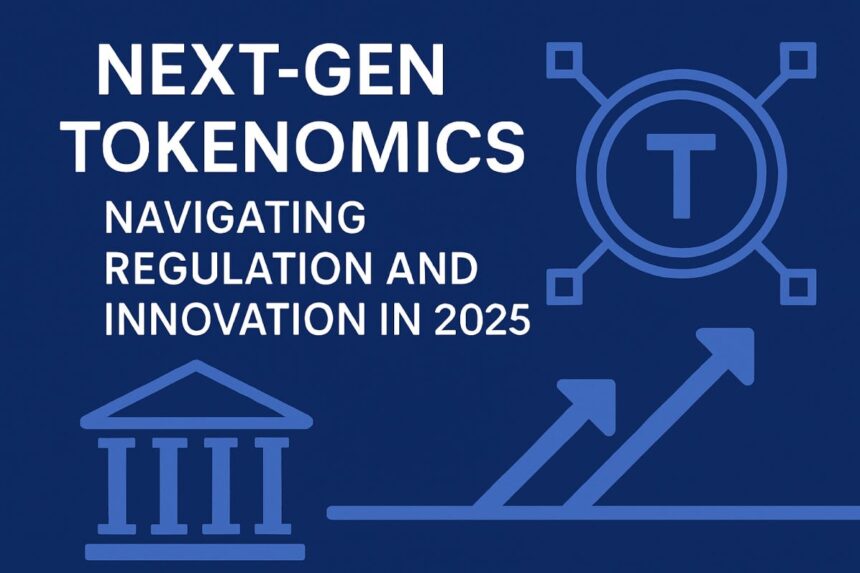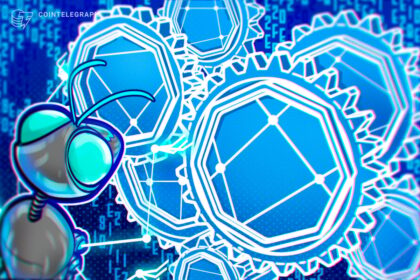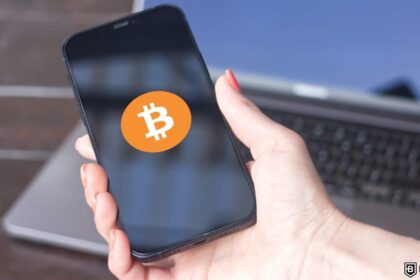The digital asset market is entering a new era in 2025, driven by regulatory adaptation, bold innovation, and the growing presence of institutional and retail participants. Tokenomics — the economic architecture of blockchain tokens — has evolved dramatically. As the world transitions toward wider blockchain adoption, understanding the rules shaping tokens and how technology is being applied has become essential for entrepreneurs, investors, and enterprises alike.
In this rapidly changing market, choosing the right Token development Company is a critical first step for anyone seeking to launch a digital asset, whether for a decentralized app, an NFT marketplace, a DeFi protocol, or a tokenization of real-world assets. As regulatory frameworks mature globally, these companies are responsible for balancing compliance, security, innovation, and practical business needs in every token project.
Defining Modern Tokenomics
Tokenomics describes how digital tokens function within a blockchain project — covering everything from issuance and supply to incentives, utility, and governance. In 2025, the emphasis is not only on how a token functions in isolation, but also how it interacts with governance, compliance, utility structures, and cross-chain capabilities.
Key Aspects of Tokenomics in 2025:
- Supply and Distribution Mechanisms
- Utility and Use Cases for holders
- Incentive Structures for users/validators
- On-chain and off-chain Governance
- Regulatory compliance
- Cross-chain interoperability
Tokenomics in 2025 benefits from a much clearer regulatory environment. Governments worldwide, particularly in the United States, Europe, and Asia-Pacific, have clarified rules around digital asset classification, stablecoins, and the responsibilities of service providers
- United States: Moving towards a friendlier stance, replacing enforcement-driven approaches with more defined rules. Approval of digital asset ETFs and establishment of strong standards for stablecoins are reshaping the field.
- Europe: MiCAR (Markets in Crypto-Assets Regulation) is now in full effect, providing guidance on the treatment, issuance, and management of digital tokens — especially stablecoins.
- Asia: Regions like Hong Kong and Singapore have implemented licensing, strict operational standards, and frameworks focused on balancing growth with risk management.
These developments have provided much-needed predictability for token operations, allowing projects to plan long term and attract more stable investment.
As compliance takes center stage, companies building and issuing tokens must adopt robust standards:
AI-Driven Token Design
Artificial intelligence tools are widely adopted in tokenomic modeling. AI enables advanced forecasting of market behavior, simulates incentive mechanisms, and helps shape sustainable supply schedules — all geared toward creating tokens that are more resilient and functional.
Layer 2 and Scalability
The cost and speed advantages of Layer 2 networks (such as Arbitrum and Optimism) have proven vital, especially for high-volume dApps and NFT projects. Most reputable token development companies now design assets that operate across these high-speed chains to improve accessibility and reduce costs.
Cross-Chain Interoperability
Tokens are increasingly being built to work across multiple chains — Ethereum, Solana, Polkadot — to address user demand and business requirements surrounding liquidity and network reach.
Decentralized Identity (DID) Integration
Privacy and compliance go hand in hand. Tokens developed with decentralized identity protocols facilitate robust KYC and AML procedures while respecting user privacy, a result of evolving global data standards.
Tokenizing Real-World Assets
2025 has seen significant progress in asset tokenization — real estate, artwork, commodities, equities, and even supply chain items can be digitized into tradable, programmable tokens backed by physical value
The Global Shift
Regulatory bodies around the world have moved from cautious monitoring to active policy setting, focusing on providing stability to the crypto sector. For token issuers, this means more rules to follow, but also greater confidence for users and investors.
Highlights by Region
- USA: Clear legal paths for stablecoins, digital asset ETFs, and DeFi operations, with agencies like the SEC providing updated guidelines and licensing regimes for service providers.
- Europe: MiCAR framework is operational, specifying transparency requirements, liability clauses, and audit trails for token issuers and trading venues.
- Asia-Pacific: Hong Kong and Singapore have set licensing and prudential requirements for exchanges, OTC platforms, and custodial services, further raising the standards for token projects.
Rather than slowing growth, regulation is now seen as an enabler for responsible innovation. Projects that can meet compliance criteria tend to attract more reputable investors and broader adoption.
Selecting a Token Development Partner
Given the intricacies of compliance, utility, scalability, and security, the right token development company will have these capabilities:
- Fluency with global blockchain platforms (Ethereum, BSC, Solana, Polkadot)
- Expertise in multiple token standards: ERC20, ERC721, ERC1155, and emerging protocols
- Strong auditing, security, and formal verification processes
- Experience integrating advanced features (like AI, cross-chain bridges, and decentralized IDs)
- Ability to support varied token types: utility, governance, security, asset-backed, NFT
- Transparent, step-by-step guidance through regulatory due diligence and documentation
Steps in Modern Token Development
- Research & Due Diligence: Evaluating the business model, asset class, and regulatory requirements for the intended token.
- Tokenomics Design: Planning supply schedules, incentives, governance, and compliance integrations.
- Smart Contract Engineering: Using programming languages like Solidity or Rust, based on platform needs.
- Comprehensive Testing: Unit, integration, and stress tests to minimize risk.
- Regulatory Review: KYC/AML modules and global compliance checks, often partnering with legal experts.
- Token Launch & Marketing: Running the token sale (ICO, STO, IDO) and promoting it to qualified investors.
- Ongoing Management: Post-launch support, updates, and audits to keep tokens safe and functional.
1. Token Utility
A credible token has well-defined utility that aligns with the goals of the blockchain project. In 2025, utility can mean using a token for:
- Governance (voting on proposals)
- Payment within the platform
- Access to exclusive content/features
- Staking for rewards or access
- Backing/representing a real-world asset
2. Supply Mechanics
Supply involves both initial issuance and ongoing management (burning, minting, halving, inflation, etc.) — decisions here affect scarcity, price stability, and community engagement.
3. Governance Models
The shift toward on-chain governance has brought more transparency and fairness. Token-based voting is used for decisions about upgrades, fund allocation, and policy changes.
4. Incentive Structures
Carefully designed rewards for validators, liquidity providers, and users drive continuous participation and honest behavior.
5. Interoperability
Having a token that functions across multiple blockchains is now a norm, not a luxury, especially for projects aiming for broad reach and resilience
MiCAR (EU)
- Requires strict transparency and reporting standards for issuers.
- Mandates regular audits for stablecoins.
- Demands clear documentation on supply, custody, and investor rights.
U.S. Approach
- SEC and CFTC are clarifying distinctions between security tokens, utility tokens, and commodities.
- Licensing for exchanges and asset managers.
- Emphasis on KYC, AML, and clear record-keeping.
Asia-Pacific Responses
- Singapore: Finalized a stablecoin framework, advanced licensing measures.
- Hong Kong: Becoming a digital asset hub with robust requirements for exchanges and payment providers.
Sustainable and Green Tokenomics
Growing attention to the environmental footprint of blockchains has led to the development of tokens on platforms with lower energy consumption, such as Solana and Algorand.
Decentralized Finance (DeFi) Integration
DeFi tokens play roles well beyond simple trading — they can unlock access to loans, insurance, and automated market makers. Their design is influenced heavily by evolving regulatory guidelines and governance demands.
Non-Fungible Tokens (NFTs)
NFTs continue to expand into gaming, collectibles, supply chain, and intellectual property. Modern NFT standards focus on usability, flexibility, and rights management.
Tokenization of real-world assets (RWA) is becoming a pillar of next-gen tokenomics. These projects digitize physical goods — property, commodities, stocks — enabling:
- Fractional ownership
- 24/7 trading access
- Improved liquidity and transparency
- Programmatic control over asset management
Projects are expected to adhere to all regional regulations for asset-backed tokens, making compliance knowledge vital for token issuers in this space
Selecting a partner is as much about trust as technical skill. Here’s what matters most:
- Experience with the latest platforms and standards
- Transparent and documented development process
- Integrated compliance modules from day one
- Comprehensive audits and ongoing support
- Customization ability without unnecessary jargon or complexity
- A strong portfolio of successful, compliant projects
Codezeros stands out in 2025 as a globally recognized player offering:
- Multiple token standards (ERC20, ERC721, ERC1155)
- Cutting-edge asset-backed, NFT, and DeFi token creation
- Robust security protocols and smart contract engineering
- Step-by-step guidance through due diligence and regulatory requirements
- Post-launch support, monitoring, and audit services for clients worldwide
- Stay current with regional and international regulation updates.
- Prioritize transparency, both internally and externally, in token design and management.
- Build with flexibility, favoring tokens that can adapt to future technological and compliance shifts.
- Source development partners with established track records in compliance, development, and support.
Tokenomics in 2025 is about navigating clear regulation, prioritizing practical use, and balancing risk with opportunity. Whether creating governance tokens for a DAO, launching an NFT collection, or developing tokens to represent real-world assets, choosing the right path — and the right partner — defines success.
If you’re seeking to launch a scalable, secure, and future-ready token project, Codezeros offers expert token development solutions. Their blend of technical experience and regulatory know-how positions them as a go-to resource for organizations worldwide looking to build in this exciting era.
Ready to take your digital asset vision to the next level? Explore Token Development with Codezeros and connect with experts who guide your project from strategy to deployment
Before you go:










